Van
Gogh only painted for the last few years of his life, but his output was
enormous. He produced more than 800 canvases- working day and night, as if
aware of the short time allotted to him.
When
Van Gogh took the fateful decision to devote himself to art, in the bleak
coal-mining district of the Borinage in Belgium, he was already 27. He had
enjoyed sketching since childhood, especially views of the flat Dutch
countryside, with peasants labouring in the fields. But he had never learned to
paint in oils.
At
first he concentrated on drawing, employing a teach-yourself method of the time
known as the Bargues technique. He was very conscious of his deficiencies, and
eagerly associated with other painters, among them his relative Anton Mauve,
whom he visited in the Hague. But Vincent's fierce independence and stormy
temperament made it impossible for him to be a pupil he invariably argued with
his mentors.
In
Paris, he was inspired by the works of the Impressionists and their followers,
who had abandoned the methods of traditional art. Working out of doors instead
of in the studio, they ignored the idea of a 'finished' painting, in which all
colours were mixed on the palette to the correct shade, then laid down smoothly
on the canvas and finally varnished. Instead they used pure, bright colours
reds and blues, yellows, whites and greens and put down their paint in rough
brush strokes which gave the impression of light being reflected from natural
surfaces.
The
Impressionist method suited Vincent's purposes like them, he liked to work fast
and out-of-doors and he soon abandoned the sombre browns and blacks he had used
in Holland for paintings such as The Potato Eaters. In Paris, too, he was
inspired by Japanese art, which had recently become popular: hundreds of
wood-cut prints were readily available at a couple of francs apiece.
Vincent
saw Arles as a French version of Japan, and he travelled south in 1888 as if on
a personal mission to create a new movement in art. For over a year he worked
himself to breaking point, painting up to 16 hours a day. He had always worked
in frenzied bursts of activity, heedless of his deteriorating health, but now
he scarcely stopped to eat or drink, almost as if aware of the short lifespan
allotted to him.
Every
day, through the blazing heat of the sum-mer, he would march out and set up his
easel. In the autumn he tried unsuccessfully to defy the fierce southern wind,
the Mistral, by pinning his canvas to the ground with heavy boulders. He would
paint all night, if necessary. To give himself enough light to paint The Café
Terrace, he stuck candles round his broad-brimmed hat and along the top of his
easel, and as the bemused Arlesiens looked on, he began to paint, 'absolutely
piling on, exaggerating the colour'.
Vincent
had always painted with thick layers of colour. Even for some of the Dutch
pictures he had applied paint so liberally that individual brushmarks were
ineffective, and he resorted to squeezing paint straight from the tube on to
the canvas, then modeling it 'a little' with his brush. Though he subsequently
learned to texture his surfaces with great sensitivity, this thickly-applied
paint known as impasto remained a hallmark of Van Gogh's art.
By
'exaggerating the colour', he explained to his brother Theo, he wished 'to
express myself forcibly'. Colours for Van Gogh did not merely describe objects,
but gave them meaning; and no colour meant more to him than yellow. In Japan it
symbolized friendship. It represented the glory of the sun and the golden wheat
in short; it was the colour of creation. Even in his night pictures yellow
plays a surprisingly important part. And in his famous painting Sunflowers he
created a whole painting with little colour other than yellow, a technical feat
almost without parallel.
Letters
to Theo requesting paint highlight Vin-cent's preference. They always start
with demands for large tubes of yellow and white paint. And the other colours
he used heavily, especially purples and blues, serve to accentuate the power of
yellow. His concern for colour extended to the framing of each work, and it was
not uncommon for him to give very explicit instructions to ensure the right
effect: on one occasion he asked for a royal blue and gold frame to be designed
especially for his canvas.
In the
months before his breakdown, Vincent produced some 200 paintings, including
about 50 portraits of his friends in Arles. Frequently he completed a painting
in a single day an amazing work-rate, even by the standards of the
Impressionists. 'I was right,' he wrote to Theo, 'to work at white heat as long
as it was fine.' And when his brother once hinted that his enormous output
might adversely affect the quality of his work, he retorted that 'Quick work
does not mean less serious work, it depends on one's self-confidence and
experience.
Under
the crushing weight of mental collapse, Van Gogh's self-confidence became badly
bruised. The swirling lines which distinguish all his late paintings seem to
echo the torment in his mind. Yet in this final phase of his career, Vincent
still worked at a punishing pace, producing a further 200 paintings in the last
year of his life. Among them was one of his greatest masterpieces the
Self-Portrait of 1890. One in a series of self-portraits equalled only by
Rembrandt's for their candour and penetration, it is a painting almost without
colour, dominated by pale, icy colours; warmed only by the orange-brown of the
artist's hair and beard.
The Bedroom at Arles
He
painted the room as simply as possible, with pure, harmonious colours and
strongly outlined shapes. The room is shown empty of people, but with an air of
expectancy: every-thing is painted in pairs. The two pairs of pictures, two
pillows, and especially the two chairs may well reflect Vincent's excitement
that his solitude was about to end.
Writer
– Marshall Cavendish
Subscribe to:
Post Comments (Atom)

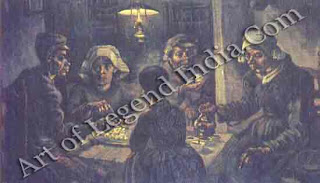
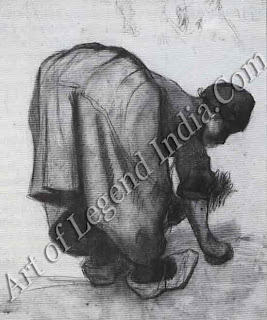
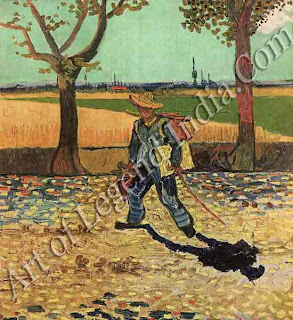
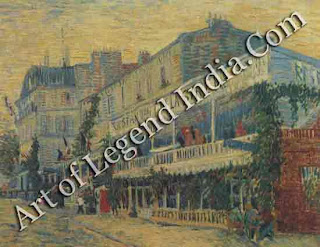

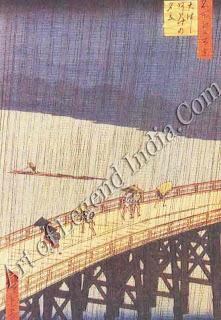










0 Response to "Netherland Great Artist Van Gogh at Work"
Post a Comment